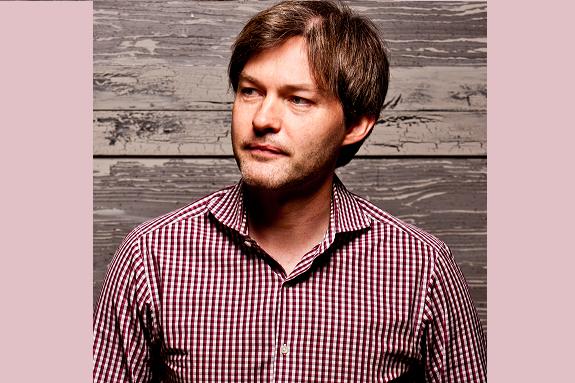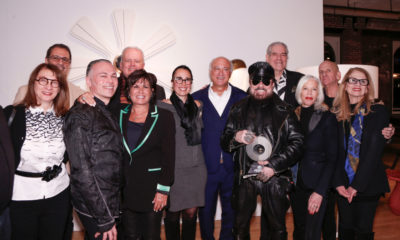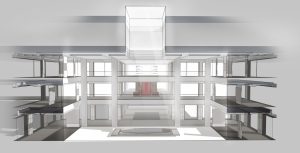If the age of the category killers and cookie-cutter retail lineups flattened the customer experience, our job today is to make it three-dimensional again. As I detailed in an earlier post, this was our strategy in Oct. 2011 after the Philippine conglomerate Store Specialists Inc. (SSI) hired us to design the interior of a luxe mall in Manila.
We sold SSI on the idea creating a place where shoppers would want to linger. That meant jettisoning the idea of squeezing profit out of every available square foot and, instead, investing time and money on interesting public spaces and amenities, including a valet lounge. We also felt that a lavish and theatrical approach to food and beverage would be critical for this yet-to-be-named mall, which is slated to open in November 2013.
To that end, we encouraged SSI to sign top-quality local and international F&B operators, and to urge those operators to create showpiece restaurants. Rather than shunting these restaurateurs into a corner or herding them all into one food court, we chose to create punctuation points for them within the architecture as a way of enlivening the overall experience.
Of these 10-or-so F&B concepts, a few were placed in highly visible inline locations, but we also dedicated spaces for them on each floor next to the atrium on the south side of the building. On either end of this space, we created feature “towers” that contain either curated fashion or F&B operators. These towers also serve as venues for pop-up shops in which Manila’s hip fashion designers, confectioners, cosmetics retailers and the like can launch new products and otherwise engage with shoppers.
The mall’s F&B brands include Sala by renowned chef Colin McKay; the specialty tea company TWG (where the well heeled can pay up to $50 for a rarified cup of tea amid an incredible presentation); Café Revive by Marks & Spencer; Starbucks and a host of other operators selling goodies such as ice cream, chocolates and French pastries. We encouraged SSI not to restrict these tenants, but instead to let them put seating out into the mall, which creates more excitement, energy and theater.
Thanks to this approach, when shoppers slowly ascend or descend on the escalator, they will traverse a sunlight-filled atrium space brimming with sights, sounds and smells. Dramatic shadows created by Philippine designer Kenneth Cobonpue’s monumental sculpture will add even further interest.
Advertisement
Why go to such lengths? The trend toward commoditized merchandise and homogenized retail lineups was ho-hum long before the rise of the smartphone. But being boring has now become the fatal flaw of modern retail. After all, why drive out to a cookie-cutter mall when you can find the same stuff on your phone? Little wonder clients often have one question for us when we start brainstorming with them on the design of new stores or malls: “How can we broaden our appeal and get people to actually slow down, spend some time and shop?”
In many respects, the answer to that question lies in the past. If you could go back in a time machine to the mid-20th century and visit, say, Macy’s, Hudson’s or Marshall Field’s, you might be surprised at the relevance of the lifestyle experience created by these landmark department stores. Indeed, their business models centered on the same fundamentals we enthusiastically pitched to SSI—namely, fantastic service, enjoyable amenities and an abundance of dwell points, all of which combine to pique shoppers’ interest, slow them down and give them ample reason to return.
Peter Burgoyne is creative director at CBX.


 Photo Gallery6 days ago
Photo Gallery6 days ago
 Headlines2 weeks ago
Headlines2 weeks ago
 Headlines6 days ago
Headlines6 days ago
 Headlines1 week ago
Headlines1 week ago
 Headlines2 weeks ago
Headlines2 weeks ago
 Headlines1 week ago
Headlines1 week ago
 Designer Dozen2 weeks ago
Designer Dozen2 weeks ago
 Special Reports2 weeks ago
Special Reports2 weeks ago


















